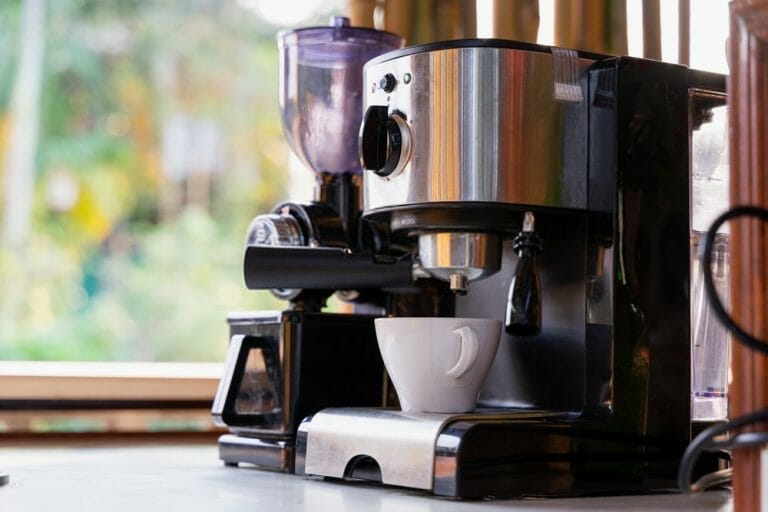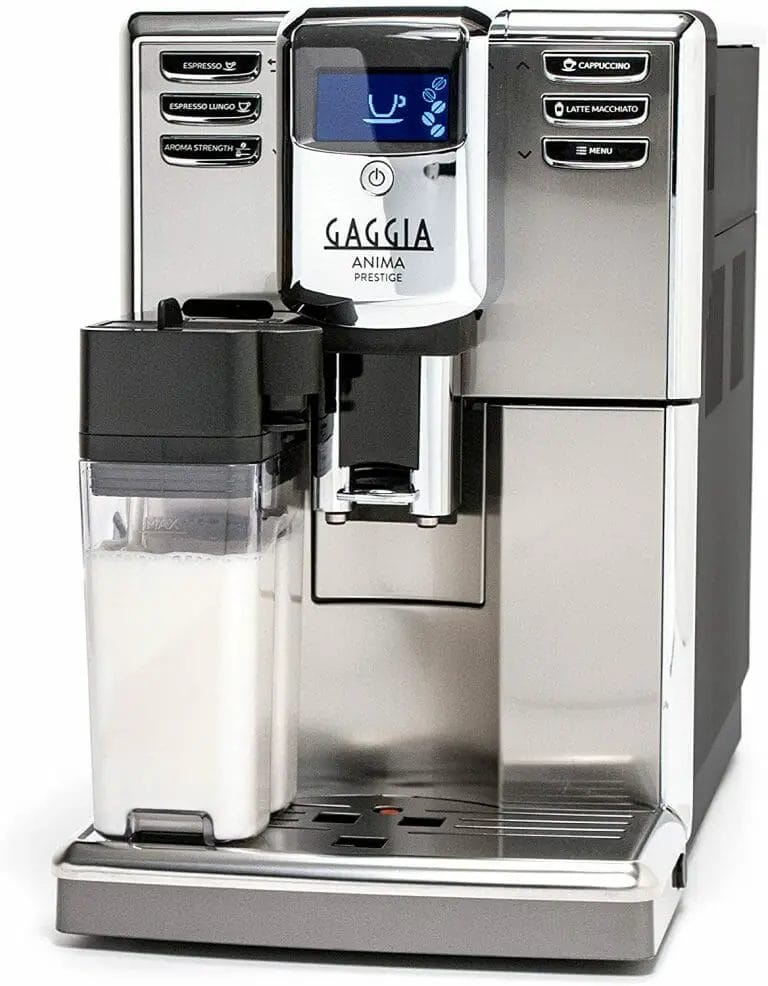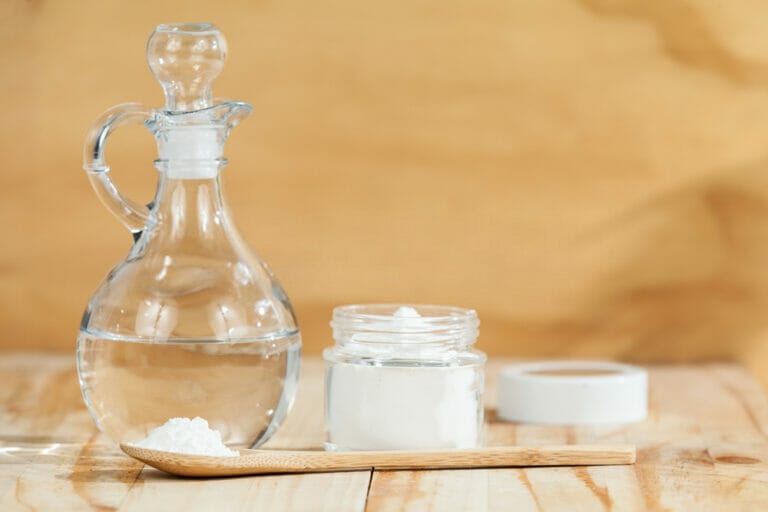What Is In Coffee Maker Cleaner
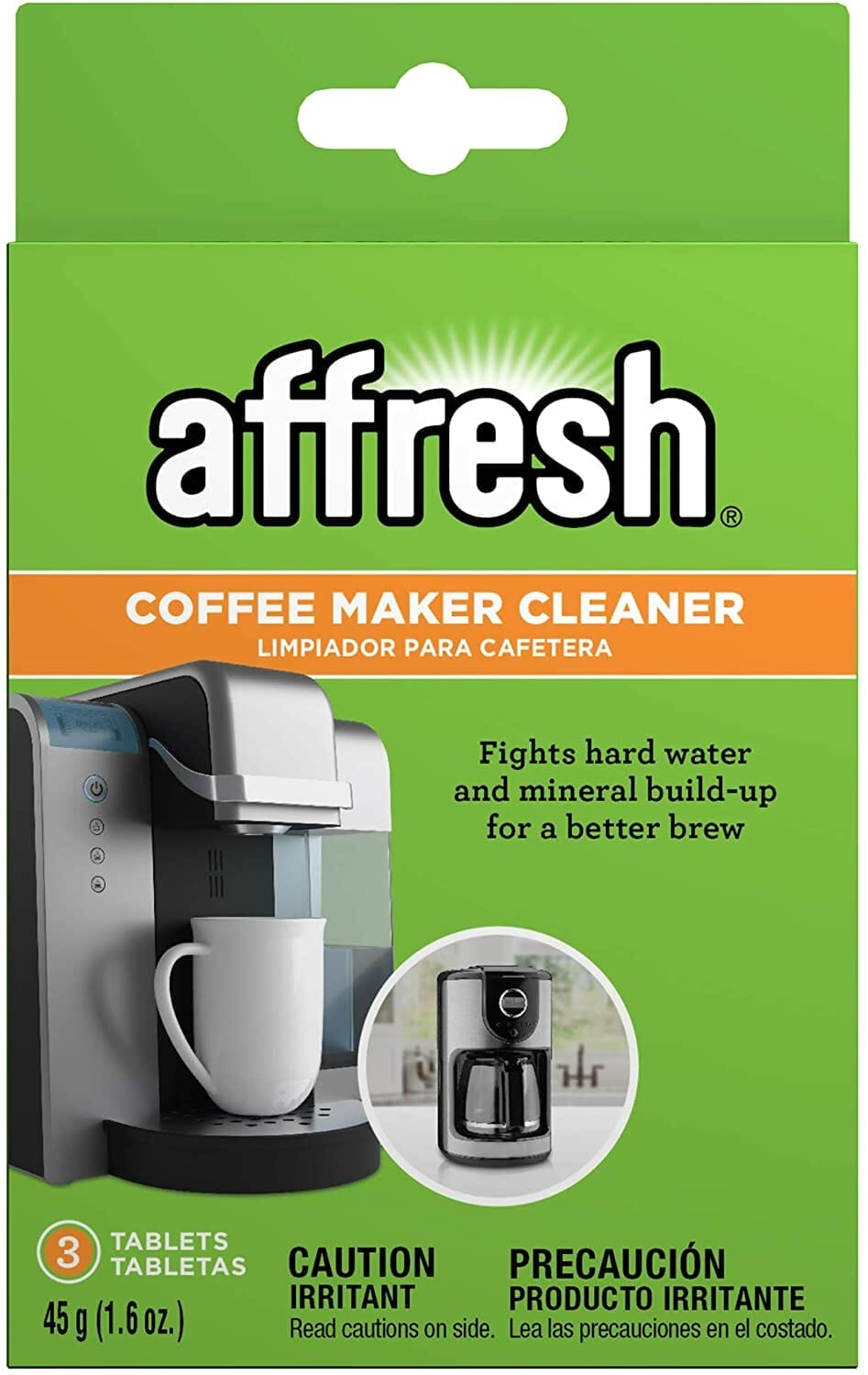
You will inevitably have to clean it regularly if you own a coffee maker. There’s no getting around that if you want to drink high-quality coffee with exceptional flavour in every cup.
A good cup of coffee needs a coffee machine that makes hot coffee. That means it should be free of buildup and fungus.
But for the device to function. You will need a cleaner to keep it in great shape. But what is in a cleaner?
This article will tell you what is in a coffee cleaner, how much to use, what cleaners are suitable for the coffee maker, and why you should buy a coffee maker cleaner instead of cleaning your coffee machine yourself.
Let’s get started!
What is in a coffee machine cleaner?
Sodium carbonate is the most common ingredient in coffee maker cleaners. It has a chemical structure comparable to baking soda (Na2CO3 va NaHCO3).

Although this chemical is utilized as a cleaning agent, baking soda is more commonly used in cooking. Therefore, the FDA considers it a chemical substance generally safe to use.
In addition, baking soda and other sodium carbonate substances (commonly called sodium bicarbonate) clean many household items that do not need to be rinsed afterwards, such as ovens and garbage disposals.
Generally speaking, you can use bicarb safely to clean your coffee maker. However, it is essential to avoid using it with water.
In addition, you should not mix it with any other chemical or alcohol-based cleaners because you could put the machine at risk of damage. Instead, use a cloth to wipe away the buildup from the tank and the coffee maker itself.
How to use a cleaner
Safety is a concern with any cleaner, so you must read the instructions before applying any cleaner to your coffee maker. The most important thing to remember is to clean your machine regularly!
Leaving buildup in the device makes it harder for chemicals to remove it. Regular cleaning will also save you money in the long term because you won't need expensive replacement parts or repairs.
Generally speaking, it is better to use a cleaner designed for your coffee maker because there is a risk of an incompatible substance damaging or interfering with the machine’s functionality.
You should always be on the lookout for the warning label, though, because some people report problems with dyes or perfumes added to some cleaning agents.
If you are concerned about harsh chemicals, you may want to look for something that does not contain chlorine bleach. This chemical can cause your coffee maker to rust prematurely.
Best coffee cleaner
While other decent options, the Brew Rite coffee machine cleaner appears to be the most effective and has the highest rating. It not only has a high customer rating on Amazon, but it’s also very affordable.
Essentially, this is a basic coffee maker cleaning that relies on a single, tried-and-true component – sodium carbonate – to clean your coffee machine effectively. There aren’t any frills or extras, but it doesn’t need them because it does what it says on the tin:
- Removes mineral deposits that get buried.
- Brewing time is reduced.
- There are no toxic residues left behind.
It’s also non-acidic and odourless, making it suitable for use in most home coffee machines. Brew Rite is also compatible with Keurig single-serve coffee makers.
It's also said to be far more effective than vinegar at removing those unpleasant bitter coffee oils from your coffee maker's mechanism.
So put, if you have a coffee machine, this cleaner will do a much better job than using vinegar or even water. It is excellent as it saves you time and money as you don’t have to spend extra cash to buy a new coffee maker!
In addition to the Brew Rite Coffee Machine Cleaner, there are loads of other cleaning products on Amazon which can clean your coffee machine from different manufacturers.
How to clean a coffee machine without vinegar?
You can always clean your coffee machine without vinegar by simply using lemon juice! If you are looking for an alternative to cleaning with chemicals, one of the best ways to clean your coffee maker is by using lemon juice.
It would help you remove the buildup in your coffee machine and ensure that you do not use harsh chemicals harmful to the device.
There are many benefits of cleaning your coffee maker using lemon juice. Not only does this help eliminate remnants left behind by chemical cleaners, but it will also bring out the original flavour of your coffee.
How to clean it:
- Remove the water tank from your coffee machine.
- Fill it up with lemon juice.
- Put the tank back in the coffee maker.
- Run it through a cycle that would heat the liquid in the coffee maker.
- Repeat this process by filling up the tank with lemon juice and running through a cycle till you get all of it out of your coffee machine.
How to clean the coffee maker with Baking soda
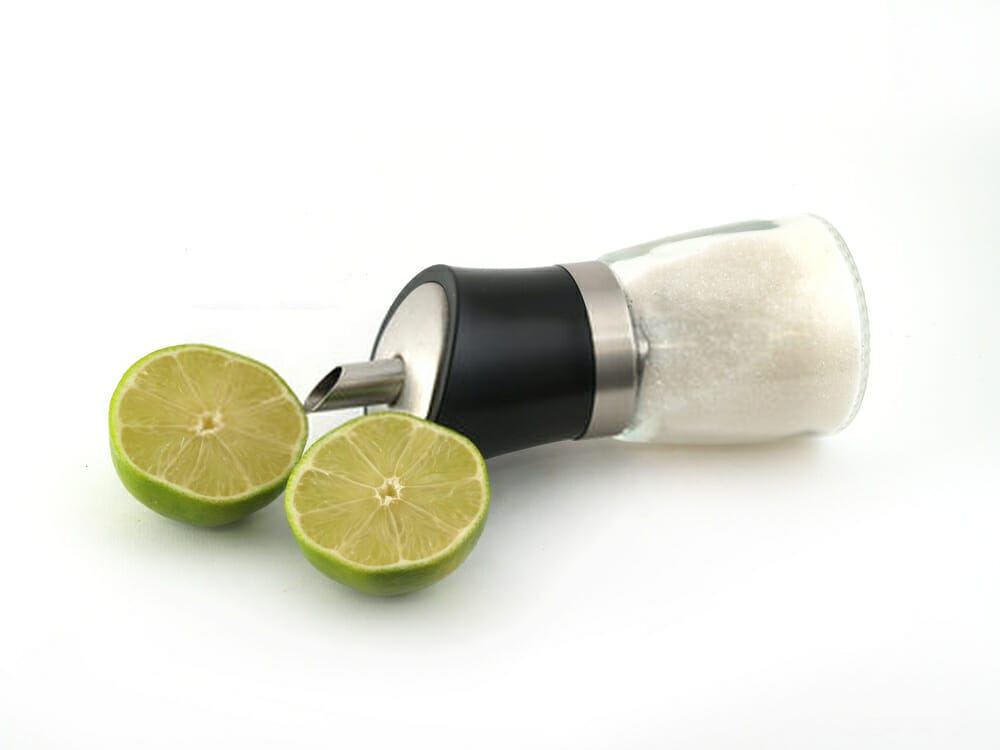
Another cheap and easy way to get rid of the buildup in your coffee machine is by baking soda. You need to get a good amount of baking soda and dissolve it in hot water.
Once thoroughly dissolved, you can pour this solution into the coffee tank and run it through a cycle. The vinegar smell will dissipate, and your coffee machine will be left squeaky clean!
How to clean a coffee maker with bleach
You can easily clean your coffee machine using bleach by taking the following steps:
- Mix equal amounts of bleach and water in a bowl.
- Pour it into the drip tray and run it through a warm cycle.
- If you do not wish to go through the trouble of mixing hot water and bleach, you can use an alternative product made for your coffee maker. – If you do not use either of these methods, then you should consult the manufacturer’s instructions before cleaning your coffee maker.
What to use to descale a machine?
You can use lemon juice, vinegar, or citric acid to descale your coffee machine. It’s really up to you. Some people are concerned about the chemicals used, particularly chlorine bleach.
While it does have its uses, it is not advisable to use it without following the manufacturer's recommendations.
Limescale builds up quickly in coffee machines and can cause your device to break down, including damages to internal components.
It can also leave behind an unpleasant sour taste in your coffee, making it even less effective. The answer is simple: use a clean mixture of vinegar and water that you mix in equal parts.
What happens if you don’t use a cleaner to clean your coffee machine?
You might be wondering what happens if you do not use any of the suggested cleaners to clean your coffee machine.
Well, you will most likely experience a bitter taste as the buildup prevents water from passing through the machine smoothly.
In addition, if you do not clean your coffee machine regularly, it could mean severe damage to your coffee machine as well as bad-tasting coffee. So, it is best to use a cleaner regularly not to experience harm or an unpleasant taste in your coffee.
What Is the Best Way to Clean a Drip Coffee Maker?
Using this highly successful and straightforward do-it-yourself method:
- Fill the water reservoir halfway with distilled vinegar and halfway with water.
- Allow it to brew by pressing the ON button.
- Allow several cups of the mixture to trickle through your drip coffee maker before turning it off and leaving it to sit for 45 minutes.
- Restart it to brew one more time (without adding or removing anything)
- Remove the water/vinegar mixture.
- Run water through as many times as necessary to remove any vinegar odour. That’s how you quickly clean your drip coffee machine.
Using Vinegar to Clean a Keurig Coffee Maker
You can also use vinegar to clean a Keurig coffee maker if that’s what you have. You can do it by first removing all of the components.

- Remove any water from your Keurig’s cold water tank.
- Remove any K-Cups that have remained.
- Wipe away any residue from the pod housing with a towel (ideally dampened).
- Fill the water tank halfway with distilled vinegar and half with water.
- Place a mug beneath the dispenser.
- Lift the handle of the pod housing and instantly close it without inserting a pod.
- Press the ‘Brew’ button.
- Repeat until the vinegar/water mixture in the water tank depletes.
- If there is any remaining vinegar and water mixture in the water reservoir, dump it.
- Fill the water reservoir with clean (ideally filtered) water and run many cycles until the vinegar stench is gone from your Keurig.
What Is The Best Way To Clean A Cuisinart Coffee Maker?
Here’s how to do it the easy way:
- Fill the carafe halfway with water and halfway with distilled vinegar.
- Select Self Clean (or Clean) from the menu.
- Using the On/Off switch/button, turn on the coffee maker (depending on the type of your Cuisinart machine)
- Turn your Cuisinart coffee maker off after it finishes the Self Clean mode
- Fill the carafe with water.
That’s it! It’s as simple as that. Afterwards, you can run another cleaning cycle using vinegar and water mixture if you desire.
What chemical is in coffee machine descaler?
Most coffee machine descaler products are made with citric acid.
Most descaling products include sodium carbonate, which provides a natural source of carbon dioxide as it breaks down. The CO2 is released during the descaling process, effectively removing limescale from the water reservoir and pipes in your coffee machine.
A few products use sodium bicarbonate, or baking soda, which is also an effective descaler.
Some descaling products use a combination of all three compounds that are naturally sourced and often biodegradable.
What is the best thing to use to clean a coffee maker?
To get the best results, use a mixture of vinegar and water or baking soda, in accordance with the manufacturer’s instructions.
If you are using any of these cleaning products, add them to the reservoir after having run several cycles with clean water.
Is coffee descaler poisonous?
It is not at all poisonous. Swallowing it can result in nausea, vomiting, diarrhea, abdominal pain and chemical burns to the gastrointestinal tract. However, it’s not lethal when swallowed. It’s an irritant and corrosive to skin contact. So avoid getting it in your eyes or on your skin.
Are all coffee cleaning tablets the same?
Just like other cleaning products, descaling products have different uses and require different instructions. Make sure you select a product that is suitable for your coffee maker. Some need to be mixed with water before use, while others are added just to the reservoir and left to do the job.
Conclusion:
So there you have it, the most common and commonly used ingredient in coffee maker cleansers is sodium carbonate. While this is essentially a chemical, the EPA and FDA both believe it safe to use.
Therefore, if your coffee machine needs a good cleaning, you should consider a coffee maker cleaner. It will clean it to its optimum extent and help fix the problem simultaneously!
I hope you’ve found this article on “What Is In Coffee Maker Cleaner” useful. Also, please check out the other great articles related to coffee makers on this site. Good luck!

